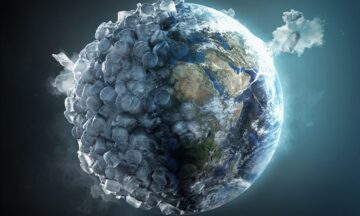Katherine Gammon in Nautilus:
 On the top of Mount Everest, in the Mariana Trench, in the human placenta, and babies’ feces: Plastics are everywhere. They are built to last, and last they do: A plastic bag can endure for 20 years in the environment, and a disposable diaper, soiled or not, up to 200. When they do finally break down into microplastics—smaller than 1 micrometer, or about 1/70th the diameter of a human hair—they can become difficult to detect. These microplastics are so ubiquitous in the environment that some scientists think we should track how they cycle through the global oceans, atmosphere, and soil much in the same way we track carbon and phosphorus.
On the top of Mount Everest, in the Mariana Trench, in the human placenta, and babies’ feces: Plastics are everywhere. They are built to last, and last they do: A plastic bag can endure for 20 years in the environment, and a disposable diaper, soiled or not, up to 200. When they do finally break down into microplastics—smaller than 1 micrometer, or about 1/70th the diameter of a human hair—they can become difficult to detect. These microplastics are so ubiquitous in the environment that some scientists think we should track how they cycle through the global oceans, atmosphere, and soil much in the same way we track carbon and phosphorus.
Clouds: Researchers recently collected 28 samples of liquid from clouds at the top of Mount Tai in eastern China. They found microplastic fibers—from clothing, packaging, or tires—in their samples. Lower altitude clouds contained more particles. The older plastic particles, some of which attract elements like lead, oxygen, and mercury, could lead to more cloud development, according to a paper published in the journal Environmental Science & Technology Letters.
More here.
